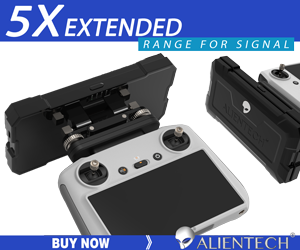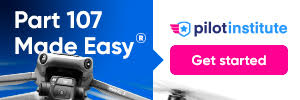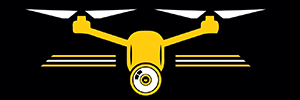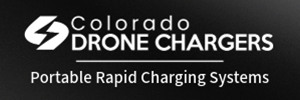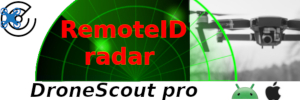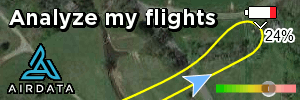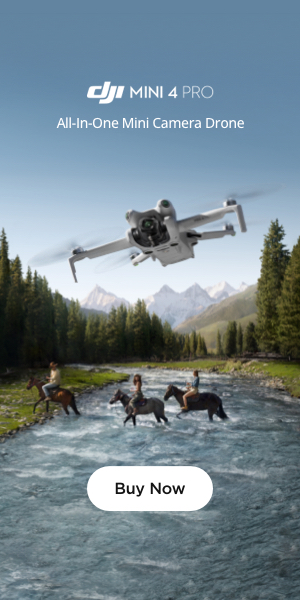You are using an out of date browser. It may not display this or other websites correctly.
You should upgrade or use an alternative browser.
You should upgrade or use an alternative browser.
100MP and 25MP DNG please
- Thread starter Filmarik
- Start date
SkySteve83
Well-Known Member
Funny you mention the Zenmuse, as I'm now thinking that an Inspire 2 with the Zenmuse 7 may be the best solution for my architectural work. I did a few shoots a few years ago with the Zenmuse 5, and they were acceptable. I didn't notice any problems at that time. Now that I own the Mavic 3 and am looking at the M4, maybe I'm being much more critical (or maybe soft corners weren't an issue on the Zenmuse). But I'm very curious about the Zenmuse 7 image quality in comparison. I may have to rent one and see how it compares. The prices on used I2s and the Z7 camera are right in line with the price of a new M4P. Of course, for personal travel or video, the Mavic is still a much better choice.I’m finding the files that Meta-4 uploaded to be much better than previous drones on the Mavic 4. Maybe not Zenmuse better, but certainly workable. The problem you describe of field curvature could very well be an issue they won’t be able to solve in such a tiny camera. I would take less center sharpness for much better uniformity for sure as it is far easier to globally sharpen than locally or have to build annoying sharpening masks like I have to do with my Mavic 3 Pro to get uniform sharpness.
Most of my large format lenses being top shelf glass generally have very uniform sharpness at prime taking apertures, even with movements. But the widest I go is 75mm and I rarely even use that as my go to zone is between 135 to 350, much like other formats.
But uniform sharpness is a pain to get from makers these days, I had to go through 3 copies a piece of the 38mm and 55mm V lenses for my Hasselblad X2D system before I got a good one with centered optics. And that is really what the complaints have been about DJI’s optics outside of the ones for the Inspire series, field curvature can be worked with, but a improperly collimated lens that is de-centered is an absolute deal breaker.
As far as decentered lenses, yes, it seems to be an issue for many years now, in the latest round of optics from all the major companies. I guess it's a factor of molded elements and mass production. Unless you are buying Leica M lenses that are still hand-fitted, there are going to be variations in quality. Just take a look at the prices for cinema lenses that have no breathing and perfect centering from Zeiss or Leica to see what a perfect lens costs these days $$$. My latest is the Fuji GFX, and I am happy to report that the three lenses I have so far are excellent.
I owned Inspire 2 with X5 and Oly lenses 12mm and 45mm and I also tried the X7 in my pursuit of better IQ from these flying platforms. I did not see appreciable difference in fine detail/resolving power with X7. I spent considerable time testing and retesting, processing and reprocessing. After all that effort and even talking with DJI support team many times I concluded (confirmed by DJI) that X7 has AA filter tuned for the so called (coveted by cinematographers) "cinematic look" videos. Meaning strong AA filter in front of sensor which effectively blurs fine detail. So I eventually abandoned the idea a stayed with X5 for 7 years. The 12mm was my favorite for its focal length and consistent IQ with the 45 being the sharpest though with a fair bit of CA. The Oly 25mm f1.8 which I craved for badly had a serious decentering issue on left side. I tried 4 different coppies even with big gap in S/N to eliminate bad batch syndrome but they were all the same. Very frustrating times if you ask me..You would also need to be aware of dust ingress upon changing lenses and learn how to clean sensor on locations, or be prepared for a fair bit of retouching of dust spots.. I sold my I2 with the lot about 3 years ago. Since then I shoot with Mavic serie.Funny you mention the Zenmuse, as I'm now thinking that an Inspire 2 with the Zenmuse 7 may be the best solution for my architectural work. I did a few shoots a few years ago with the Zenmuse 5, and they were acceptable. I didn't notice any problems at that time. Now that I own the Mavic 3 and am looking at the M4, maybe I'm being much more critical (or maybe soft corners weren't an issue on the Zenmuse). But I'm very curious about the Zenmuse 7 image quality in comparison. I may have to rent one and see how it compares. The prices on used I2s and the Z7 camera are right in line with the price of a new M4P. Of course, for personal travel or video, the Mavic is still a much better choice.
As far as decentered lenses, yes, it seems to be an issue for many years now, in the latest round of optics from all the major companies. I guess it's a factor of molded elements and mass production. Unless you are buying Leica M lenses that are still hand-fitted, there are going to be variations in quality. Just take a look at the prices for cinema lenses that have no breathing and perfect centering from Zeiss or Leica to see what a perfect lens costs these days $$$. My latest is the Fuji GFX, and I am happy to report that the three lenses I have so far are excellent.
Looking back at the photos taken with the Oly12mm today I have to say that they were not much better in the corners and near edges if at all than what a well centered Mavic can do these days. In general I think we are getting more critical and our expectations grow. I am guilty as charged too...
Just my 2 cent worth..
Last edited:
SkySteve83
Well-Known Member
Thank you for the info. I keep forgetting the early days of digital when all our cameras had AA filters, which were terrible for fine detail. I jumped on the Nikon D800E, and then to Sony in pursuit of detail and never looked back, although the search for worthy optics was quite a chore. At this point, using my M3P is my only option, so I'll keep testing out different settings and see what I can get out of it.I owned Inspire 2 with X5 and Oly lenses 12mm and 45mm and I also tried the X7 in my pursuit of better IQ from these flying platforms. I did not see appreciable difference in fine detail/resolving power with X7. I spent considerable time testing and retesting, processing and reprocessing. After all that effort and even talking with DJI support team many times I concluded (confirmed by DJI) that X7 has AA filter tuned for the so called (coveted by cinematographers) "cinematic look" videos. Meaning strong AA filter in front of sensor which effectively blurs fine detail. So I eventually abandoned the idea a stayed with I2 for 7 years. The 12mm was my favorite for its focal length and consistent IQ with the 45 being the sharpest though with a fair bit of CA. The Oly 25mm f1.8 which I craved for badly had a serious decentering issue on left side. I tried 4 different coppies even with big gap in S/N to eliminate bad batch syndrome but they were all the same. Very frustrating times if you ask me..You would also need to be aware of dust ingress upon changing lenses and learn how to clean sensor on locations, or be prepared for a fair bit of retouching of dust spots.. I sold my I2 with the lot about 3 years ago. Since then I shoot with Mavic serie.
Looking back at the photos taken with the Oly12mm today I have to say that they were not much better in the corners and near edges if at all than what a well centered Mavic can do these days. In general I think we are getting more critical and our expectations grow. I am guilty as charged too...
Just my 2 cent worth..
I keep repeating myself but I can not recommend enought DxO PureRaw. Since I included it in my workflow I reckon that M3P has become very usable and pretty decent camera drone. I have no affiliation with DxO. I paid for the software, I am just a happy user.Thank you for the info. I keep forgetting the early days of digital when all our cameras had AA filters, which were terrible for fine detail. I jumped on the Nikon D800E, and then to Sony in pursuit of detail and never looked back, although the search for worthy optics was quite a chore. At this point, using my M3P is my only option, so I'll keep testing out different settings and see what I can get out of it.
There are not many options out there unless you want to go with something like Alta and rig your D800 to it. But that is a big step, huge!
Last edited:
gianlucaballoni
Active Member
Hi guys, I read the replies to my comment about decentred lenses. Someone mentioned "quality images", well, the problem with many dji units with decentred lenses is that the image quality is still high and you can work well with them in raw, although ok, we are always talking about cameras with small sensors, incomparable to full frame reflex etc. etc., however, I repeat, the images come out beautiful, and with excellent retouching you can get remarkable work, what makes me angry is that there is something that dji could very well solve that ruins this quality. Yet at the time of the mini2 there was much more attention and hearing people who had a decentred mini2 was a rarity, in fact, I don't remember one! Now, to think that a mini2 (with all due respect) has a sharpness superior to a mavic4pro makes me a little angry!
SkySteve83
Well-Known Member
That's just not possible for most of my shoots. I have a guy with an Alta that I've used a few times flying my Sony A7R and Zeiss 21 with fantastic results, but the cost is not justified for the bulk of my clients. They don't see the difference like I do. I'll look into DXO and see if it makes a difference. My go-to is Capture One for most of my raw processing, which is excellent with my Sony and Fuji raws.I keep repeating myself but I can not recommend enought DxO PureRaw. Since I included it in my workflow I reckon that M3P has become very usable and pretty decent camera drone. I have no affiliation with DxO. I paid for the software, I am just a happy user.
There are not many options out there unless you want to go with something like Alta and rig your D800 to it. But that is a big step, huge!
That's just not possible for most of my shoots. I have a guy with an Alta that I've used a few times flying my Sony A7R and Zeiss 21 with fantastic results, but the cost is not justified for the bulk of my clients. They don't see the difference like I do. I'll look into DXO and see if it makes a difference. My go-to is Capture One for most of my raw processing, which is excellent with my Sony and Fuji raws.
Which software do you guys use for stitching?
I have been C1 user for 20 years. An early adopter in 2004 when I bought my first serious digital camera Canon 1DsMkii. I exclusively used C1 for procesing raw files for all those years. When I started using DJI drones which record DNG raw file format I could not get the quality I wanted with C1. I tried Lr one day and never looked back. I believe that C1 simply does not handle DNG files well. I still use it for processing Canon raw files but for DNG files Lr produces superior results with natural looking fine detail. In combination with DxO Pure Raw it is like night and day difference. The photos are crisp with amazing detail which I did know existed in M3P filesThat's just not possible for most of my shoots. I have a gut with an Alta that I've used a few times who is fantastic, but the cost is not justified for the bulk of my clients. They don't see the difference like I do. I'll look into DXO and see if it makes a difference. My go-to is Capture One for most of my raw processing, which is excellent with my Sony and Fuji raws.
SkySteve83
Well-Known Member
It's very frustrating when manufacturers make decisions that we see as mistakes. To us, it's a tiny fix that would make a huge difference, but most users don't seem to care so they have no reason to fix it. It's sad that Hasselblad's name is anywhere near that camera. The brand set the bar for uncompromised optics and imaging along with Leica and Schnieder.Hi guys, I read the replies to my comment about decentred lenses. Someone mentioned "quality images", well, the problem with many dji units with decentred lenses is that the image quality is still high and you can work well with them in raw, although ok, we are always talking about cameras with small sensors, incomparable to full frame reflex etc. etc., however, I repeat, the images come out beautiful, and with excellent retouching you can get remarkable work, what makes me angry is that there is something that dji could very well solve that ruins this quality. Yet at the time of the mini2 there was much more attention and hearing people who had a decentred mini2 was a rarity, in fact, I don't remember one! Now, to think that a mini2 (with all due respect) has a sharpness superior to a mavic4pro makes me a little angry!
I keep repeating myself but I can not recommend enought DxO PureRaw. Since I included it in my workflow I reckon that M3P has become very usable and pretty decent camera drone. I have no affiliation with DxO. I paid for the software, I am just a happy user.
There are not many options out there unless you want to go with something like Alta and rig your D800 to it. But that is a big step, huge!
It might be about a month until DxO releases a module for the cameras on the Mavic 4 Pro. They are usually several weeks behind the release of a new platform like this if not a bit longer. They go out of their way to thoroughly go through the lenses/sensors and check for needed corrections before releasing modules for both the PureRAW as well as PhotoLab applications.
SkySteve83
Well-Known Member
Now that you mention it, I don't think C1 even supported the Mavic DNG files until a few versions ago. So I was using LR for a while with the Mavic files at that time. Depending on the shoot, I still use LR quite a bit for raw processing and then head to C1 if I have a Sony raw with highlight issues. Every new version of LR, C1, Photoshop etc are always improving so who knows? My Mavic 3 images are sharp enough most of the time, but too small for what I'm used to working with. If they were 40MP I could easily crop out the soft edges and still have a large image to deliver. That's why I had high hopes for the M4's 100MP output. Even the native 25MP may help in that way.I have been C1 user for 20 years. An early adopter in 2004 when I bought my first serious digital camera Canon 1DsMkii. I exclusively used C1 for procesing raw files for all those years. When I started using DJI drones which record DNG raw file format I could not get the quality I wanted with C1. I tried Lr one day and never looked back. I believe that C1 simply does not handle DNG files well. I still use it for processing Canon raw files but for DNG files Lr produces superior results with natural looking fine detail. In combination with DxO Pure Raw it is like night and day difference. The photos are crisp with amazing detail which I did know existed in M3P filesIf you try DxO, turn the Lens Softness to OFF and only sharpen in Lr. That's all IMHO only.
SkySteve83
Well-Known Member
I haven't done any stitching with my Mavic but the vertical mode in the Mavic 4 looks promising to use that way. When I've stitched other images from my Sonys I use Lightroom or Photoshop and are perfect if you shoot them correctly.Which software do you guys use for stitching?
Have you tried up-resing using the Enhanced - Super Resolution in Lr? It renders photos 10500x7900px from the M3P Hassy camera after first processed in DxO PureRaw, and they look pretty good even when printed largeNow that you mention it, I don't think C1 even supported the Mavic DNG files until a few versions ago. So I was using LR for a while with the Mavic files at that time. Depending on the shoot, I still use LR quite a bit for raw processing and then head to C1 if I have a Sony raw with highlight issues. Every new version of LR, C1, Photoshop etc are always improving so who knows? My Mavic 3 images are sharp enough most of the time, but too small for what I'm used to working with. If they were 40MP I could easily crop out the soft edges and still have a large image to deliver. That's why I had high hopes for the M4's 100MP output. Even the native 25MP may help in that way.
Last edited:
landscapetog
Well-Known Member
landscapetog
Well-Known Member
With exposure bracketing, HDR and stitching in LR, you can capture absolutely stunning images from the M3 (and I am sure the M4, too).The 70mm especially has been an absolute champion for stitching. The stitched panos can be printed large and look stunning exhibiting incredible detail. Even a pro landscape photographers shooting with MF cameras and not familiar with current drone technology are amazed and can't believe that this is possible to achieve with a tiny flying machine
. Something like this simple 3 shot stitch can be printed 40" wide without any problem
landscapetog
Well-Known Member
The sensor and optics in my Panasonic would easily fit into the camera on the Mavic if they would dump the second and third cameras. I guess they prioritize quantity over quality; those of us who are looking for uncompromised still photos are left out. Stitching looks like it may be the best solution, but sometimes that's not an option.
"high-quality images" is very subjective. Try making a 30x40" print from a landscape shot from your Mavic and let me know how it looks. For some of us, that is our requirement. It's frustrating that DJI is so close to being able to provide that, but don't. That is just not their market.
Maybe when I get my hands of the new M4P it will be better than what I expect or have seen so far.
I was on board with you about putting the biggest camera and best lens in the air possible, but after several years of doing landscape photography with drones I've come around to a very different viewpoint on this.
1) For drone photography, a rock-solid, stable platform for bracketing and stitching is really important for top IQ (image quality)
2) Time in the air beats almost anything else for getting the shot. 35+ minutes on a Mavic 3-4 destroys the 15-20 minutes you get with interchangeable lens systems. You will ALWAYS need/want more time in the air when the subject and light come together
3) Having to land, swap battery, swap lens etc. versus switching on the fly between 28/70/168mm means you will miss so many opportunities with changing light, clouds etc
4) You can almost always equal / exceed 35mm digital or even MF digital output quality by spending a bit of time using exposure bracketing + stitching
5) A well integrated and robust drone + camera like the Mavic 3/3P/4P is like a high quality tool that always does what you ask of it. Drone + separate camera or IL systems have many more rough edges that will cost opportunities as you spend time managing the platform instead of using it to its best advantages
Something tells me I am going to get the DXO module update well before I get the darn drone.It might be about a month until DxO releases a module for the cameras on the Mavic 4 Pro. They are usually several weeks behind the release of a new platform like this if not a bit longer. They go out of their way to thoroughly go through the lenses/sensors and check for needed corrections before releasing modules for both the PureRAW as well as PhotoLab applications.
LOL...Something tells me I am going to get the DXO module update well before I get the darn drone.
I agree with this, and the new Mavic 4 can get you at max altitude (500M if less than 30 miles from an airport) in 50 seconds and a mile down range from that in one minute. With the longer battery life, that means a LOT more hang time on the subject which I really look forward to.I was on board with you about putting the biggest camera and best lens in the air possible, but after several years of doing landscape photography with drones I've come around to a very different viewpoint on this.
1) For drone photography, a rock-solid, stable platform for bracketing and stitching is really important for top IQ (image quality)
2) Time in the air beats almost anything else for getting the shot. 35+ minutes on a Mavic 3-4 destroys the 15-20 minutes you get with interchangeable lens systems. You will ALWAYS need/want more time in the air when the subject and light come together
3) Having to land, swap battery, swap lens etc. versus switching on the fly between 28/70/168mm means you will miss so many opportunities with changing light, clouds etc
4) You can almost always equal / exceed 35mm digital or even MF digital output quality by spending a bit of time using exposure bracketing + stitching
5) A well integrated and robust drone + camera like the Mavic 3/3P/4P is like a high quality tool that always does what you ask of it. Drone + separate camera or IL systems have many more rough edges that will cost opportunities as you spend time managing the platform instead of using it to its best advantages
I feel 20MP is barely passible for pro use so going to 25MP with a properly collimated primary optic is going to make a big difference when you run the image through your processing regimen.
I think these drones are phenomenal tools for aerial image making and just absurdly good for aerial cine work. But they can not do everything which is why I still love to fly helicopters and high fixed wing aircraft for some projects. One recent year long project I wrapped up was for a regular ski area client. They wanted a very specific angle taken from about 12,000' feet up and there was no land based solution in which to launch a drone from. To make matters even more interesting, it had to be 4' feet tall by 36' feet wide and done twice from exactly the same place but one in Summer and one in Winter. I shot it from my friend's Cessna 210 high wing that has no struts and has retractable landing gear. I then I had to shoot frames for massive stitched pano with 100MPH winds with the camera lens sticking out the window. They came out fanstastic, shot with a Nikon Z9 and 135mm 1.8 Plena at F2.8.
The resulting file is 4GB and reveals details as small as one inch from miles away. Drones just can't to that.
Similar threads
- Replies
- 36
- Views
- 5K
- Replies
- 34
- Views
- 15K
- Replies
- 18
- Views
- 1K
DJI Drone Deals
New Threads
-
-
4 Pro Another sunrise in the Mojave Desert of California
- Started by JeffreyS
- Replies: 1
-
Last Week's Most Popular Topics (December 20, 2025)
- Started by msinger
- Replies: 0
-
-
Members online
Total: 3,201 (members: 11, guests: 3,190)



